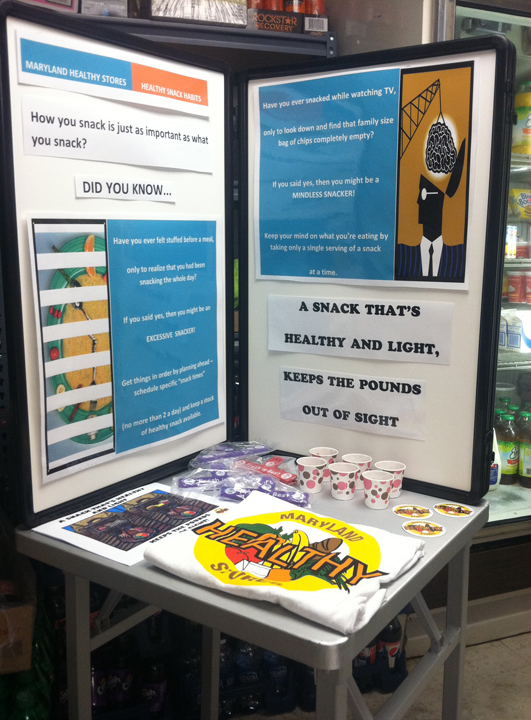Maryland Healthy Stores

Staff
Introduction/Overview
Maryland Healthy Stores (MHS) is a collaboration between the Maryland Department of Health and Mental Hygiene (DHMH), and Johns Hopkins Bloomberg School of Public Health (JHSPH), and County Health Departments across Maryland. MHS is part of Maryland’s Community Transformation Grant and works to create environmental change and increase access to healthy foods through creating changes in small stores. The overall goal of the MHS program is to increase access to and consumption of healthy food choices, and ultimately reduce risks associated with obesity and other diet-related chronic diseases (such as diabetes and hypertension) in members of rural Maryland communities.
Interventionist Manual of Procedures
Download the full Maryland Healthy Stores Interventionist Manual of Procedures (pdf)
Primary Aims
To decrease obesity in low-income areas through environmental change in small rural corner/convenience stores through:
Project Features
A pilot test of the MHS program was conducted in 4 intervention and 4 comparison stores in Charles County, Maryland from April to September 2012. In the Charles County pilot program we were able to increase availability of healthy foods and health promotion materials in the intervention stores. Maryland Healthy Stores is currently being expanded into 6 additional Maryland Counties in 2012.
Project Phases
The Maryland Healthy Stores program is comprised of several phases that are focused on increasing the consumption of healthy beverages, snacks, prepared foods, and promoting healthier cooking. Additional phases that are being developed for the expanded MHS program focus on reducing use of sodium, trans-fats and tobacco. Each phase promotes healthy foods and habits by using in-store interactive sessions, posters, shelf labels, taste tests, and educational materials.
Lessons Learned
Here are some lessons learned from the MHS pilot in Charles County, MD:
> Lesson Learned #1
Storeowners need local health department support to stock healthy foods, which may be new products in the store. Local Health Departments can also provide support by identifying and addressing barriers to stocking these items especially during the initial phases of the program.
> Lesson Learned #2
Stores that focus on the sale of groceries should be prioritized. Stores that are heavily dependent on sales from alcohol, lottery, and tobacco products and have limited food items available may experience barriers to implementing healthy stores strategies.
> Lesson Learned #3
Implementation of Healthy Stores strategies takes time. Storeowners need to see that healthy stores strategies implementation has the potential to increase sales. Initial phases should be at least 2-3 months to generate storeowner buy-in and support.





